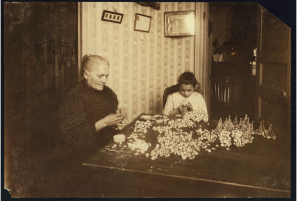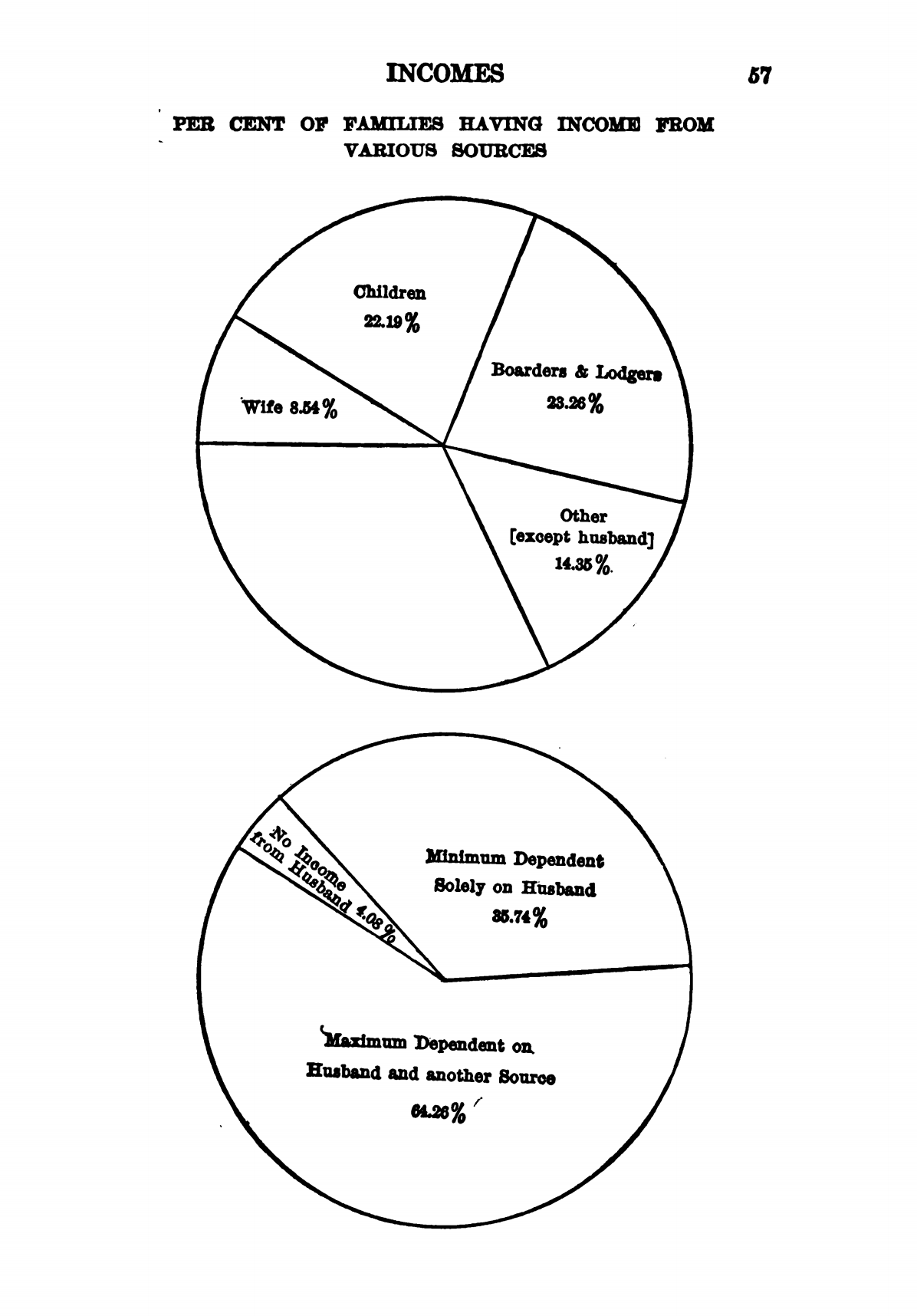“When not tending the furnace or occupied with other duties for others and her own family, she makes flowers, assisted by her niece Josephine, 12 years old.” Lewis Hine, Photograph, 1911.

The act of working around the clock is a theme that was quite evident throughout families in industrial cities. Generally the parents would hold low paying wage jobs and the income was not sustainable for their family’s basic necessities and needs. In creating ways to make additional income (crafts, apparel, etc.) to help support their family, the practice of working in the home (tenement) becomes much more prevalent in American cities. Working in their own tenement, as opposed to working in a dedicated building, puts forth the notion that work is a continual aspect of family life in industrial cities. Continual work can lead to health problems, physical and mental stress, children’s growth, and many other negative effects.
This photograph was captured by Lewis Hine in 1912 in New York City. Intended to illustrate one of the many daily chores completed by families living in tenement housing in the city. A mother and her daughter work together, in their apartment, in making flowers to sell for additional income.
Sources of Income
 Streightoff, Frank. The Standard of living among the industrial people of America. Boston: Houghton Mifflin, 1911.
Streightoff, Frank. The Standard of living among the industrial people of America. Boston: Houghton Mifflin, 1911.
The 18th annual report of United States Commissioner of Labor conducted a study of roughly twenty-five thousand families across the United States (Streightoff 1911). This pie-chart shows that all members of the family have an impact on the overall income of each household. Having different sources of income was the norm in industrialized cities, the wages were too low for families to provide for themselves. So, children, wives, boarders, and others (not including the husband) would typically have to find some way to add to the family income. The husbands of the families played a large role in income gathering, the report showed that 99.28% of husbands (in the study) were at work (Streightoff 1911).
Edith Hopkins Interview, November 2019
On the other side of this subject, my grandmother Edith Hopkins shares an account from her childhood depicting how immigrant workers impacted her life. She is asked “Did people come to your home to work for your family? Including chores and others”, “Who would stoke the fires?”. All of these questions were asked by my father, Mark Pyle.
Edith shares how there were different daily jobs to be completed, including the upkeep of the fire (because central heating was not prevalent yet), a live-in nurse, and a live-in cook. What is interesting is that she explained that these workers were from places other than the United States. Her cook was a Scottish immigrant and the nurse was from England, both of these facts add to the point of the exhibit because they illustrate how immigrants were compelled to find different sources of income. It is important to understand both sides of the story so that one can fully acknowledge the dedication of immigrants during the industrial era.
Family Work
As explained above, continuous work was prevalent throughout families living in tenements. Not only was it necessary for survival, families would often not be able to properly feed their children because most of their income, if not all, would be used for rent or other monthly costs that were greatly important. This photo, captured by Lewis Hine, illustrates this ongoing theme of continual work in industrialized cities. To the right of the photo is an excerpt from John Mitchell’s The Workingman’s Conception of Industrial Liberty (1910).
“He is not really free who is forced to work unduly long hours and for wages so low that he can not provide the necessities of life for himself and his family; who must live in a crowded tenement and see his children got to work in the mills, the mines, and the factories before their bodies are developed and their minds trained.” (Mitchell 1910).
